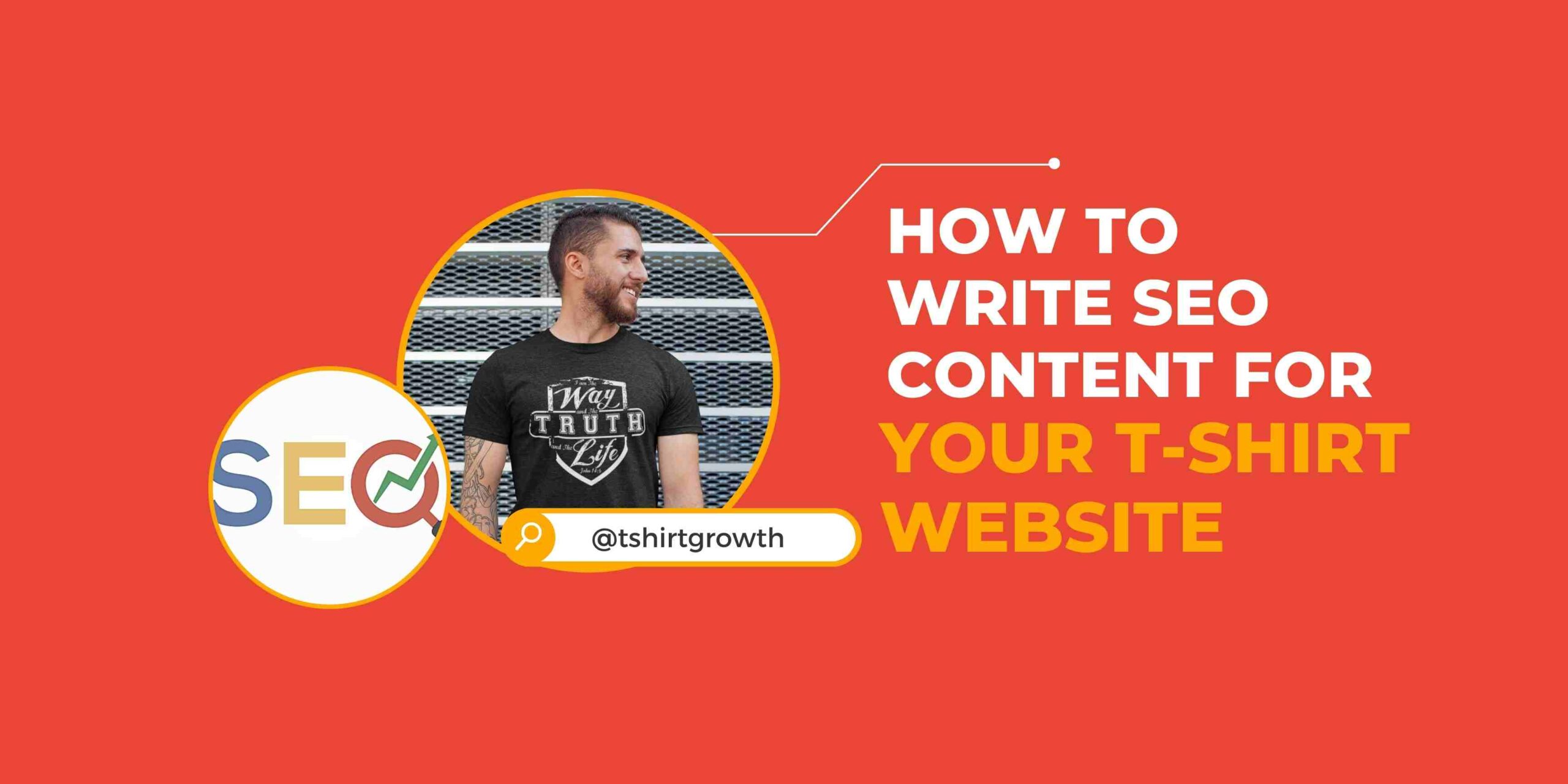SEO is king when it comes to online marketing and if you want to grow your t-shirt website you cannot do without it. So in this article, we will show you how to write SEO content for your t-shirt website that performs well and brings in sales.
In a recent report, over 49% of marketers stated that organic search provides the best ROI of all available digital marketing channels.
Another report revealed that the number one result on Google’s SERPs (Search Engine Results Pages) receives 32% of all user clicks.
This means that while most digital marketers agree that SEO is the best promotional approach, to enjoy the benefits of search marketing you rank high (at least the top 3 results on the first page) in the SERPs.
I recently built a 6-figure eCommerce T-shirt brand on SEO. Here’s some tactical advice from what I learned.
Step 1: Start with Keyword Research
Keywords are words and phrases that users on Google use to execute search queries. Simply put, in this context, a keyword is a word or phrase that potential customers would input in the search field to find products, content, and websites similar to yours.
For example, if you sell t-shirts with outdoor designs, and you drop “outdoor t-shirts” into a keyword research tool you will find ideas like “hiking t-shirts”, “camping t-shirts”, “hunting t-shirts” and more.
If you continue to research each key phrase, you will get all kinds of long-tail (more specific) keyword ideas to help you SEO-optimize your website and pages to drive customers to your products organically.
You will use this process (keyword research) to help your customers find your products when they type keywords into Google and other search engines.
There are several tools to find keywords, but one that I like for the price is Keysearch.co. It goes for under $20/mo. and offers powerful research functions such as Cost Per Click, search volume, keyword difficulty, Youtube search ideas, etc.
How else can you go deeper into finding keywords for your products? Let’s say your t-shirt niche is outdoor travel, go to ChatGPT (an Open AI research tool) and enter the prompt: give me the list of all national parks in the United States (or just in one state).
ChapGPT, for example, would show you the following for California alone:
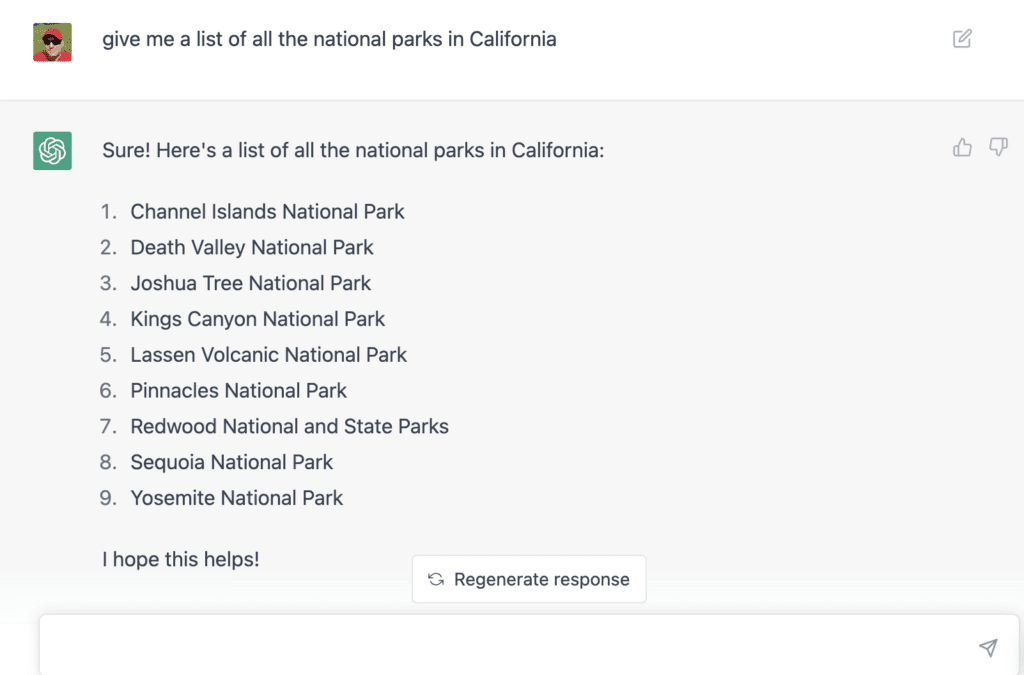
- Channel Islands National Park
- Death Valley National Park
- Joshua Tree National Park
- Kings Canyon National Park
- Lassen Volcanic National Park
- Pinnacles National Park
- Redwood National and State Parks
- Sequoia National Park
- Yosemite National Park
Now, the idea is that there are keywords for each option in the list and even an overall keyword you could use as a Category. For instance, using this data you can create a Category in your outdoor apparel website called “National Park T-shirts” and under this category, you’d have products like Yosemite shirts, Yosemite tees, Sequoia shirts, etc.
That said, take the list generated and build ideas that you can use keysearch to expand on.
Now, as mentioned, for each of the locations there are keywords. Yosemite National Park, for instance, has Yosemite Tees, Yosemite shirts, etc.
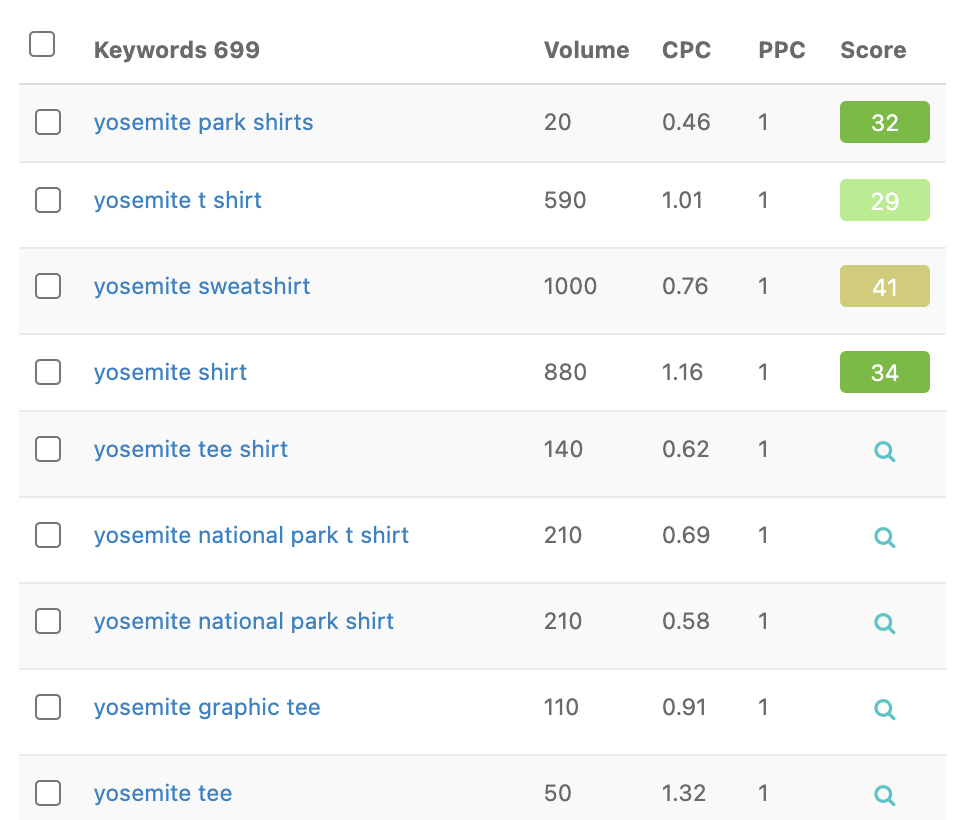
After getting the keywords for a particular destination, you can search their monthly search volume (how many people are searching for the product using the keyword) and competition (the number of your competitors fighting to rank for the keyword).
If you want to drive users searching for information to your website then you want keywords with high search volume and low competition. Of course, everyone wants the same thing. So there will always be some competition. The best chance for you to succeed against the competition is to “know” a little more about the niche than your competitors.
If you are familiar with National Parks, for example, you can differentiate your content with information about the parks.
Step 2: Write In-depth Product Descriptions
Your product descriptions must be in-depth, unique, and highly informative enough to get people to buy your products. Product descriptions are the primary way of getting your t-shirts to rank on Google. So the information must be clear to both users and the search engine. That said, here are 4 tips for writing effective product descriptions:
Write for Potential Customers, not the Search Engines
What’s good for users is good for Google, because the latter’s primary concern is usability, not keyword stuffing. Google’s organic ranking algorithm is built to help searchers find what they’re looking for, not just find a page filled with keywords. So if your description does not accurately solve the user’s query you’ll have ranking problems.
Do not Copy and Paste Descriptions from the Manufacturer’s Website
Your wholesale source probably has a presence on Google already, so copying and pasting content directly from their website as your product description will result in duplicate content, which will get your page delisted from the SERPs and harm your website in general.
Major on Benefits but include Features
Features simply describe what your shirts are made of. For example, “round neck cotton t-shirt” is a feature, which is great but the customer wants to know how a cotton t-shirt would benefit them.
A better description would be “round neck tee made with 100% cotton that feels soft on the skin”.
The second option describes what the customer would gain from a listed feature, which is more informative to both the user and search engines.
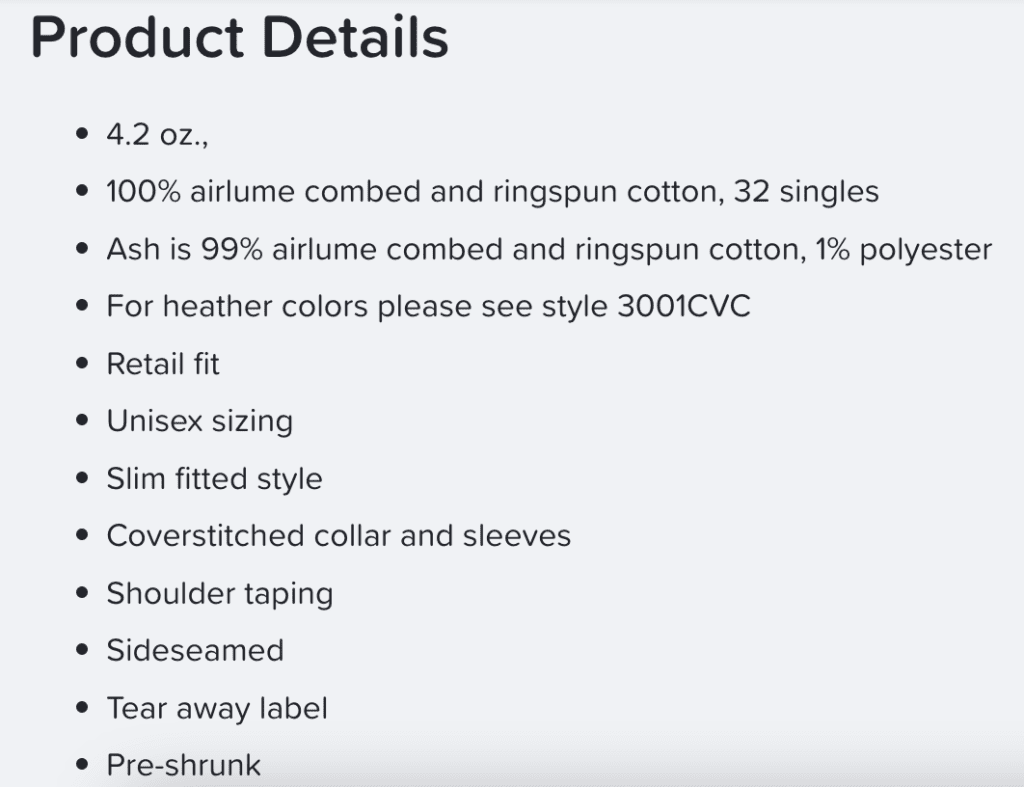
Sizing is a huge thing for customers. Include size charts and specify whether your t-shirts run fitted or baggy. Let users know if the shirts are lighter or heavier weight. It does matter. The way the shirts fit and the comfort of the t-shirts was what I heard most about in the reviews.
Add Descriptive Keywords
Optimizing your product descriptions for search engines isn’t complete without adding the right keywords gotten from the keyword research stage.
For example, from the National Park keyword list, you can pick the Yosemite Shirts option for a product.
Now you would want to go on Google and input the term in the search bar and look at the auto-complete phrases and copy them. For instance, a top auto-complete option is “Yosemite shirts for sale”. This is a related keyword you’d want to add to your description.
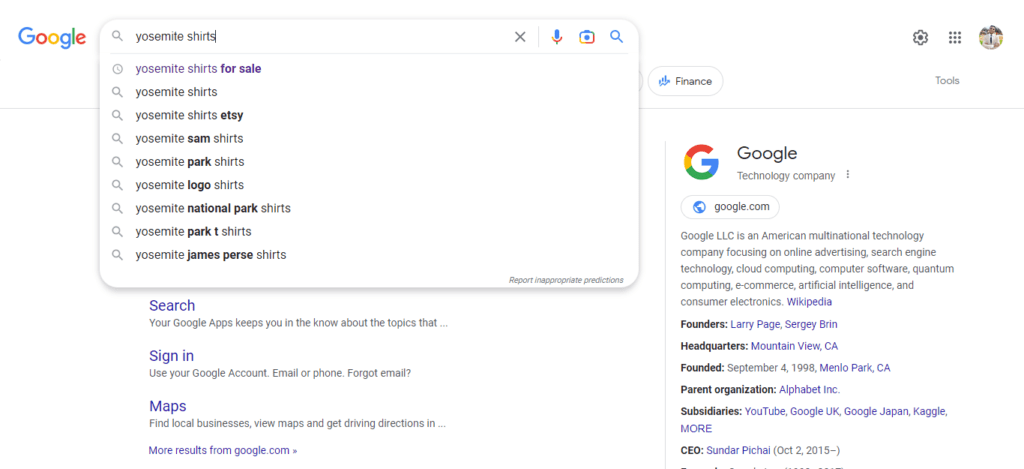
Next, hit enter for the term and copy the phrases under “people also ask”.
These terms will have to cover everything related to the term and give you a clear picture of how users are searching for Yosemite Shirts. You can then include the terms in your product descriptions.
I always add information related to the t-shirt design in my product descriptions. For the Yosemite Park t-shirts, you want to add something about Yosemite Park. Let’s say your T-shirt design is a hand-drawn rendition of “Half Dome” at Yosemite Park.
You might title the t-shirt Yosemite Park Half Dome T-shirt.
And you can include some information about the design and about “Half Dome” like this.
The Yosemite Park Half Dome T-shirt is a hand-drawn design created by the team at OutdoorTees.store. This design is a beautiful 4-color graphic on a Next Level 6010 Tri-blend tee.
Half Dome is the inspiration for this t-shirt design.
More about Half Dome
Half Dome is one of the most iconic and recognizable natural landmarks in Yosemite National Park. It is a granite dome that rises over 4,700 feet above the valley floor and stands at an elevation of 8,842 feet. Half Dome is located in the eastern end of Yosemite Valley and is easily visible from many parts of the park.
Half Dome is named for its unique shape, which appears as if someone sliced the dome in half. The dome’s smooth, sloping face is a popular destination for rock climbers, who come from all over the world to climb the granite face. The ascent to the top of Half Dome is challenging, and climbers must use a combination of climbing equipment and hiking to reach the summit.
This is how to supercharge your product descriptions. You can repeat this method on all of your t-shirt designs.
Step 3: Write Descriptive Category Pages
Your category pages must be descriptive and include your target keyword. You must also ensure that your content is organized concisely and logically. For instance, Google’s web crawlers would find it difficult to navigate your website if you have a California national park shirt category and New York park shirts as products under it.
Also, if you have various subcategories you’d want to use long-tail keywords in the last category as these types of phrases have a stronger buyer intent than shorter options.
Lastly, ensure that your URLs, titles, and category names all include your target keyword.
If you have a women’s Christian t-shirt category, then you want to make sure that only “women’s Christian t-shirts” are in this category. This will help Google know what the category is about as well.
Lastly, add a few paragraphs of content above or below the products. In this example from Kerusso, they rank 1st page for “Christian T-shirts”. One SEO tactic that helps is the content below the products:
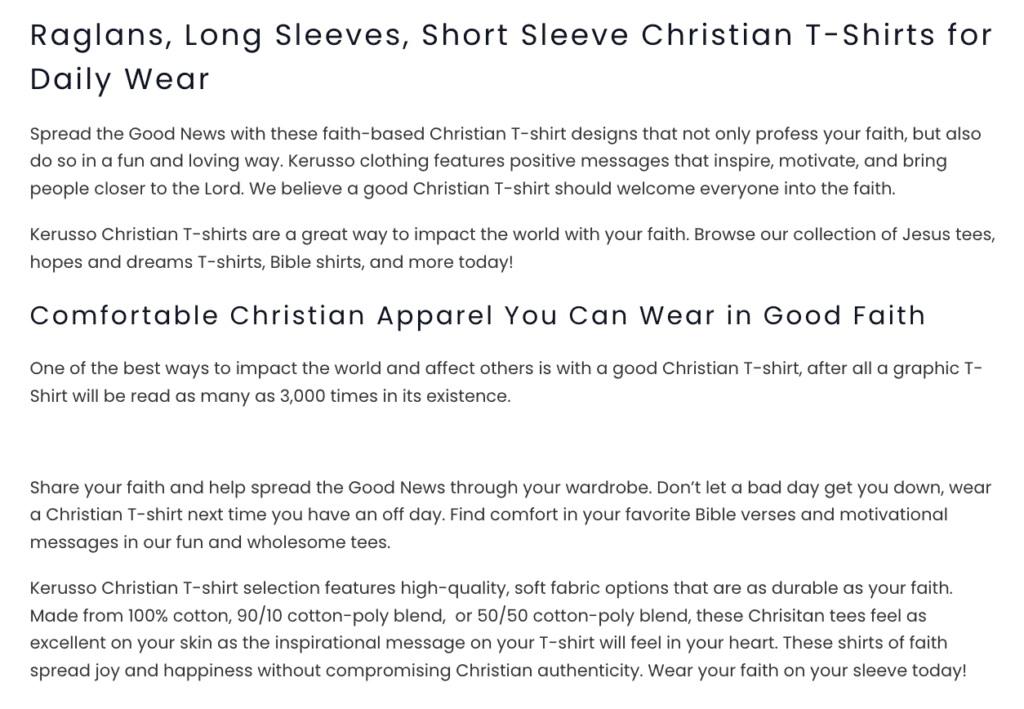
Step 4: Write Keyword-rich Blog Content
Google is big on ranking authority sources to ensure that its users get the best information on any query. This means you need to present your brand as an authority in your niche to boost your rankings. And to do this you need to create a blog for your website that provides information on your type of products and niche in general.
Use keywords to guide what type of content to write and also include them with a rule of thumb of 3-4 times for every 1000 words. To find the right keywords to add, use Keysearch to discover low-competition keywords with high search volume you can easily rank for and get traffic. For our national park example, there are numerous options for topics.
You can write blog content that directly highlights your products (mid to bottom funnel content) like “Top 5 Shirts for National Park Visits!”
You can also write top-of-funnel content (less intent to buy, but high traffic potential) that will drive potential customers to your products. For example, “Best Hiking Spots in Yosemite” is a great piece that will drive traffic to your site from people who are going to or have been to Yosemite. Then include links and photos to your Yosemite shirts in the blog post.
For people that already have a blog, you could reverse this strategy and add products to your blog site. For example, if you own a Skateboard blog, you could add eCommerce and sell skateboard products on your existing blog. If you can build the blog up enough to get people on the site already interested in skateboards, then converting them to customers is much easier.
Step 5: Ask Customers to Leave Reviews
Customer reviews are considered favored content by search engines. This is primarily because they present an unbiased view of your product and over 90% of customers search for reviews before buying. So to satisfy buyer queries, Google ranks customer reviews to give the user a clear idea of the product’s quality.
Customer reviews also allow you to get unique content for your blog with ranking potential.
This means you must prioritize and encourage customers to leave reviews on your product pages as well as respond to them to show potential buyers that you value their opinion.
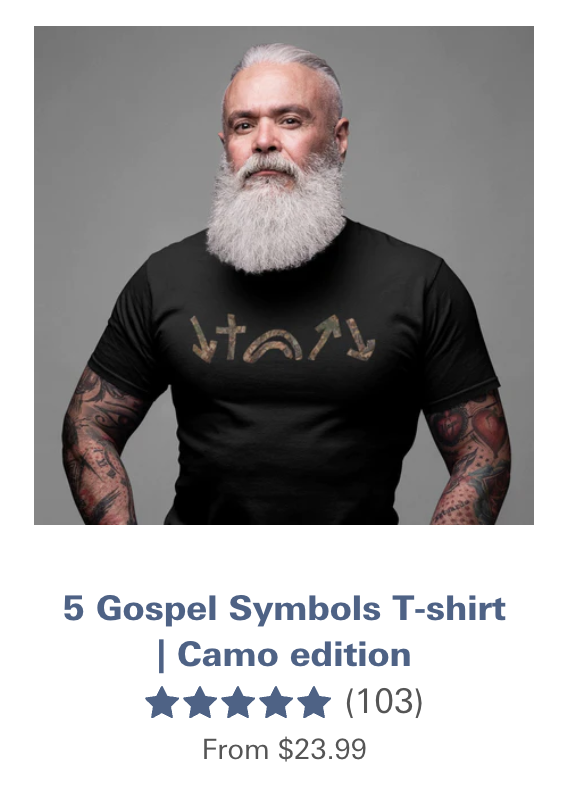
“My favorite tool for reviews is the Shopify plugin, LOOX, which you can use to send requests for reviews, automatically, after a customer places an order. This tool worked so great, it created hundreds of reviews, many with photos, in a very short time. This was an integral part in my growth of 316Tees.”
Bryan Robinson, Founder of 316Tees.com
Conclusion
SEO is crucial for any online business and doing it the right way can result in tremendous financial benefits for your brand.
It is possible for you to get a brand noticed in other ways. But SEO has the highest long-term ROI over any other marketing channel or method online.
Let us know if you have any questions about SEO or other nerdy t-shirt growth topics. We’d love to help.
Bryan E. Robinson is the former owner of TshirtGrowth. He has sold t-shirts since 2006 through dropshipping, screen printing, vinyl printing, DTG, Print on Demand, and more. Bryan has created his own t-shirt designs through Photoshop, Canva, and other platforms, as well as worked with freelancers to create many of his designs. Besides t-shirts, Bryan has over 18 years of experience in online marketing with eCommerce, B2B SaaS, B2C products, and more.

